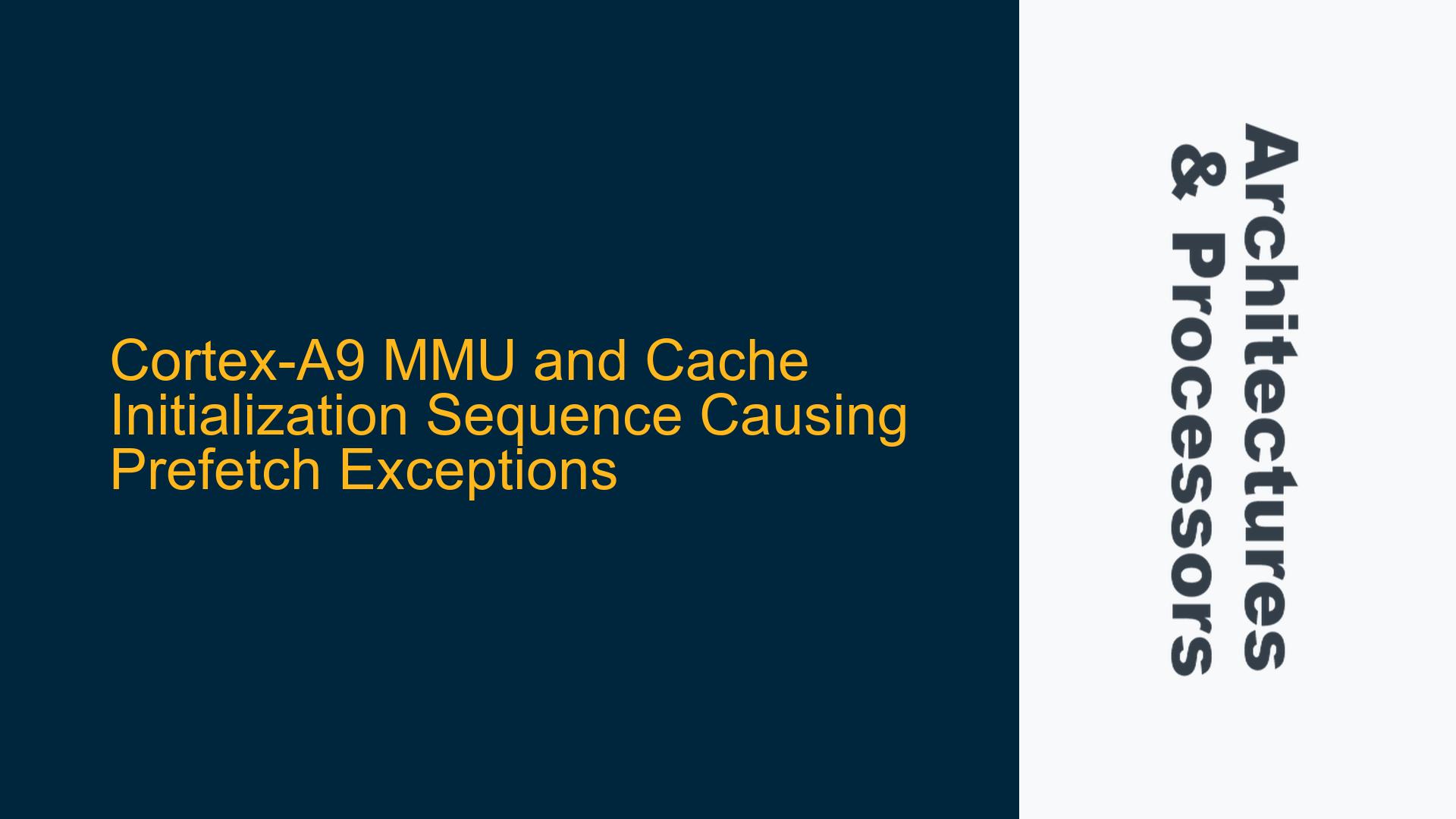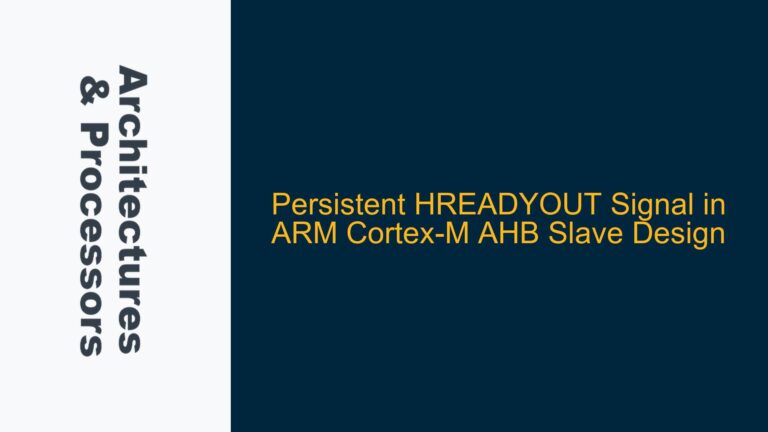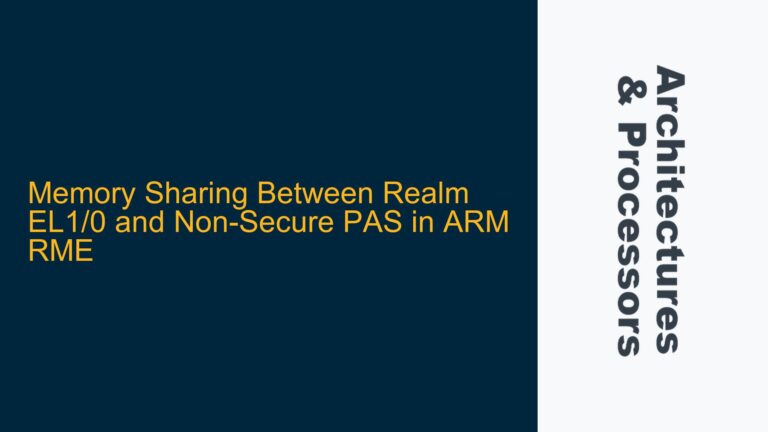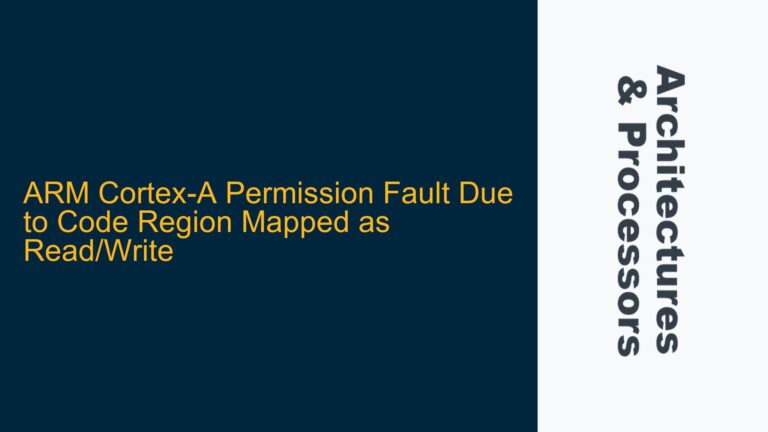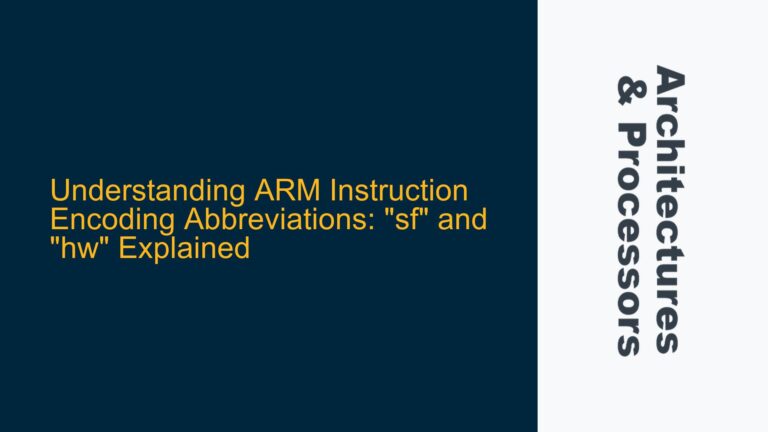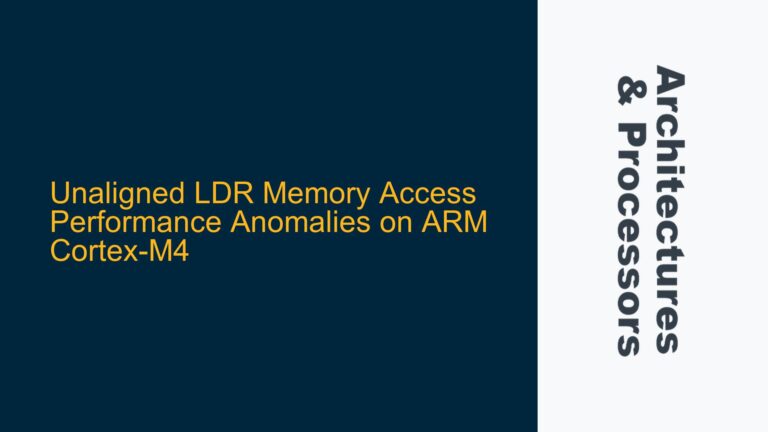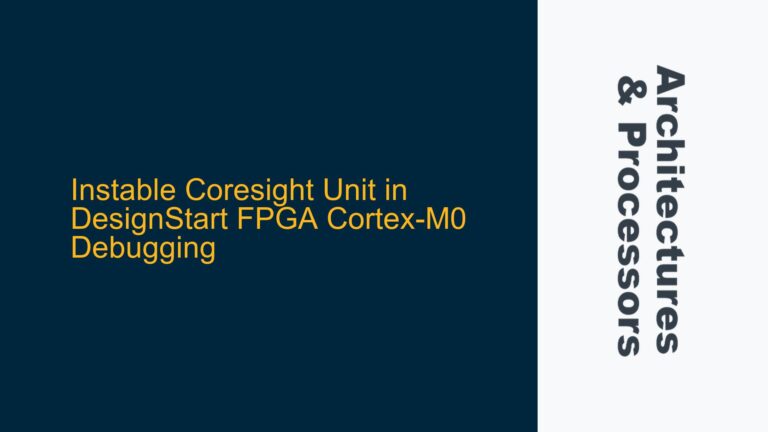Cortex-A9 MMU and Cache Initialization Sequence Causing Prefetch Exceptions
The Cortex-A9 processor, commonly found in embedded systems like the i.MX6Q, relies on a precise sequence of operations to initialize the Memory Management Unit (MMU) and caches. When this sequence is not followed correctly, it can lead to prefetch exceptions, particularly when enabling interrupts. This issue often stems from improper cache coherency, incorrect MMU table configurations, or misaligned memory barriers. Below, we will dissect the problem, explore potential causes, and provide detailed troubleshooting steps to resolve the issue.
Improper Cache Coherency and MMU Table Configuration During Initialization
The Cortex-A9 MMU and cache initialization sequence is critical for ensuring that the processor can correctly access memory and execute instructions. The MMU translates virtual addresses to physical addresses, while the caches (L1 and L2) store frequently accessed data and instructions to improve performance. However, if the caches are not properly invalidated or if the MMU tables are incorrectly configured, the processor may attempt to access invalid or stale data, leading to prefetch exceptions.
In the provided scenario, the prefetch exception occurs immediately after enabling interrupts. This suggests that the processor is attempting to fetch an instruction from an invalid or improperly mapped memory location. The MMU table entries appear correct at first glance, but the issue likely lies in the timing or sequence of operations during initialization. Specifically, the following areas require careful examination:
-
Cache Invalidation Timing: The L1 and L2 caches must be invalidated before enabling the MMU to ensure that stale data is not accessed. If the caches are not properly invalidated, the processor may fetch incorrect instructions or data, leading to exceptions.
-
MMU Table Configuration: The MMU table must be correctly populated with valid entries for all memory regions that the processor will access. This includes the boot ROM, peripherals, OCRAM, and code/data memory regions. Any incorrect or missing entries can cause the processor to generate prefetch exceptions.
-
Memory Barriers and Synchronization: The Cortex-A9 requires explicit memory barriers (
DSBandISB) to ensure that all previous operations are completed before proceeding. If these barriers are omitted or placed incorrectly, the processor may attempt to access memory before the MMU and caches are fully initialized. -
Interrupt Enable Timing: Enabling interrupts before the MMU and caches are fully initialized can cause the processor to handle exceptions incorrectly. This is particularly problematic if the vector table is not correctly mapped or if the caches contain stale data.
Memory Barrier Omission and Cache Invalidation Timing
The Cortex-A9 architecture relies on precise timing and synchronization to ensure that the MMU and caches are initialized correctly. One of the most common causes of prefetch exceptions is the omission of memory barriers or incorrect cache invalidation timing. Let’s delve deeper into these issues:
Memory Barriers (DSB and ISB)
Memory barriers are used to enforce the order of memory operations. The DSB (Data Synchronization Barrier) ensures that all previous memory accesses are completed before proceeding, while the ISB (Instruction Synchronization Barrier) flushes the pipeline to ensure that all subsequent instructions are fetched with the updated memory mappings.
In the provided code, DSB and ISB are used after modifying the System Control Register (SCTLR) and enabling the MMU. However, these barriers may not be sufficient if they are not placed correctly. For example, the DSB should be used after invalidating the caches and before enabling the MMU to ensure that all cache operations are completed. Similarly, the ISB should be used after enabling the MMU to ensure that the processor fetches instructions with the updated memory mappings.
Cache Invalidation Timing
Cache invalidation is a critical step in the initialization sequence. The L1 and L2 caches must be invalidated before enabling the MMU to ensure that the processor does not access stale data. In the provided code, the caches are invalidated using _dcache_invalidate() and _icache_invalidate(). However, the timing of these operations may be incorrect.
For example, if the caches are invalidated after enabling the MMU, the processor may attempt to access stale data before the invalidation is complete. This can lead to prefetch exceptions or other undefined behavior. To avoid this, the caches should be invalidated before enabling the MMU, and a DSB should be used to ensure that the invalidation is complete.
Branch Prediction and Prefetching
The Cortex-A9 supports branch prediction and prefetching to improve performance. However, if these features are enabled before the MMU and caches are fully initialized, the processor may prefetch instructions from invalid or improperly mapped memory locations. In the provided code, branch prediction is enabled by setting the Z bit in the SCTLR. This should be done after the MMU and caches are fully initialized to avoid prefetch exceptions.
Implementing Data Synchronization Barriers and Cache Management
To resolve the prefetch exception issue, the MMU and cache initialization sequence must be carefully reviewed and corrected. Below are detailed troubleshooting steps and solutions:
Step 1: Invalidate Caches Before Enabling the MMU
The L1 and L2 caches must be invalidated before enabling the MMU to ensure that the processor does not access stale data. The following sequence should be used:
_int_disable(); // Disable interrupts
_L2_pl310_cache_disable(); // Disable L2 cache
_dcache_invalidate(); // Invalidate data cache
_icache_invalidate(); // Invalidate instruction cache
__DSB(); // Ensure cache invalidation is complete
__ISB(); // Flush the pipeline
Step 2: Configure the MMU Table Correctly
The MMU table must be correctly populated with valid entries for all memory regions. The following table summarizes the required entries:
| Memory Range | Section Size | Memory Type | Permissions | Shareability |
|---|---|---|---|---|
| 0x00000000-0x00900000 | 1MB | Device | RW All | Shareable |
| 0x00900000-0x00A00000 | 1MB | Strongly Ordered | RW All | Shareable |
| 0x00A00000-0x10000000 | 1MB | Device | RW All | Shareable |
| 0x10000000-0x10100000 | 1MB | WB | RO All | Non-Shareable |
| 0x10100000-0x10200000 | 1MB | WB | RW All | Non-Shareable |
Step 3: Use Memory Barriers Correctly
Memory barriers must be used to ensure that all previous operations are completed before proceeding. The following sequence should be used:
__DSB(); // Ensure all previous memory accesses are complete
__ISB(); // Flush the pipeline
Step 4: Enable the MMU and Caches
The MMU and caches should be enabled only after all previous steps are completed. The following sequence should be used:
sctlr = __MRC(15, 0, 1, 0, 0); // Read SCTLR
sctlr |= BM_SCTLR_M; // Enable MMU
__MCR(15, 0, sctlr, 1, 0, 0); // Write SCTLR
__DSB(); // Ensure MMU enable is complete
__ISB(); // Flush the pipeline
_dcache_enable(); // Enable data cache
_icache_enable(); // Enable instruction cache
Step 5: Enable Interrupts
Interrupts should be enabled only after the MMU and caches are fully initialized. The following sequence should be used:
_int_enable(); // Enable interrupts
By following these steps, the prefetch exception issue can be resolved, and the Cortex-A9 processor can correctly initialize the MMU and caches.
